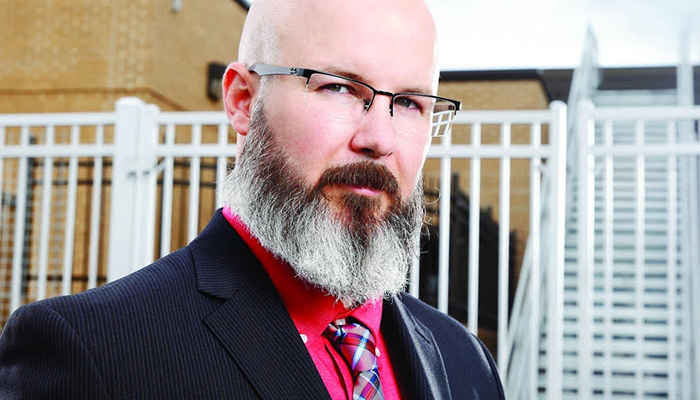Q&A: Lord Fairfax CC's Richie Crim on Community College as a Plan A
Community colleges are leveraging tech to offer up new experiences to students. EdTech interviews Richie Crim, the CIO of Lord Fairfax Community College, a 2015 winner of the Center for Digital Education's Digital Community Colleges Survey Award.
SIGN UP: Get more news from the EdTech newsletter in your inbox every two weeks!
EDTECH: What are the biggest IT challenges facing community colleges right now?
CRIM: There’s a stigma: the idea that community college is a Plan B. It’s not a Plan B at all. It should be a Plan A. The way we get past that stigma is to try to match or beat what a four-year institution would have. We have laser cutters and engravers, 3D printers, robotics — anything you can think of.
EDTECH: How do you reconcile that drive to have the best technology with the reality of budget constraints?

Richie Crim, CIO of Lord Fairfax Community College.
CRIM: We’ve been somewhat fortunate. We have had a lot of capital projects, and we have been able to leverage some budgets in those projects to purchase IT materials for those buildings. Also, we have to be adaptable. I think people in IT struggle with that, especially leadership, because they think they have to have the technology mapped out for four or five years. We said, “Let’s not just buy the ‘latest and greatest.’ Let’s make every classroom a great base line.” We’re not trying to find a five-year solution and make every classroom the same for five years.
EDTECH: Historically, community colleges have served student populations that may have lacked access to computing resources. Is the digital divide still important, or has it become less of an issue as costs have come down?
CRIM: The barrier still exists. In most cases, our students don’t have money to afford a higher-end device. We do see a lot of them with laptops. Most of them have phones. The frustrating thing for me is when I see a student with a $300 phone, and they have a $100 data plan, and they walk into a class, and the instructor says, “Put all your cell phones in a basket” or “You can’t use your phone in this class.” I don’t see that at our school, but you hear about it. My view is, no, take that device and have somebody be the fact checker in the classroom. Have students record notes and send them out to the class from their phones. Embrace that device, because it’s super powerful.
EDTECH: You’ve said before that your school never innovates for the “sake of innovation.” How can IT managers ensure that investments have a tangible, positive impact on students?
CRIM: It’s a fine line. We look at adoption first. We find someone who is interested first and we say, “Hey, do you want to try this?” And they say, “Oh, sure.” And the cool thing is that what happens then is we don’t push the technology. We have whoever is interested in it drive the technology. They lead it. They get excited about it. And then the next instructor comes to me and says, “Hey, I want to do this.” That’s easy for me. I go out and buy the widget and hand it to them. I think that’s the most important thing: making sure the driver isn’t me. If I drive the technology and don’t work on the adoption piece, we’ll never be innovative.
EDTECH: What recent IT upgrades have you made that have had the largest impact on student learning?
CRIM: Early on, we focused on wireless. We knew that students were going to be bringing in multiple devices. We scattered out wireless early on to make sure we had 100 percent in-building coverage, and we also looked at outside spaces. We didn’t want to have any drops in service. If somebody pulled up YouTube and they walked through the building, we wanted them to be able to stream from one side of the building to the other. That’s literally what we did. We got a laptop, turned on YouTube and walked through the halls and made sure that was a seamless transition for students.
We want students to enjoy their experience here. They’ll come in and pull up a game or watch a Netflix movie between classes. They’ll socialize with friends on social media. If they leave the campus because they can’t do those things, then the experience for them is less than what we want to offer them. We want them to be on campus. We want them hanging out in our student lounges. We want them utilizing the services that they’re paying for. We don’t want to be a commuter campus, where they just show up, take a class and leave.









